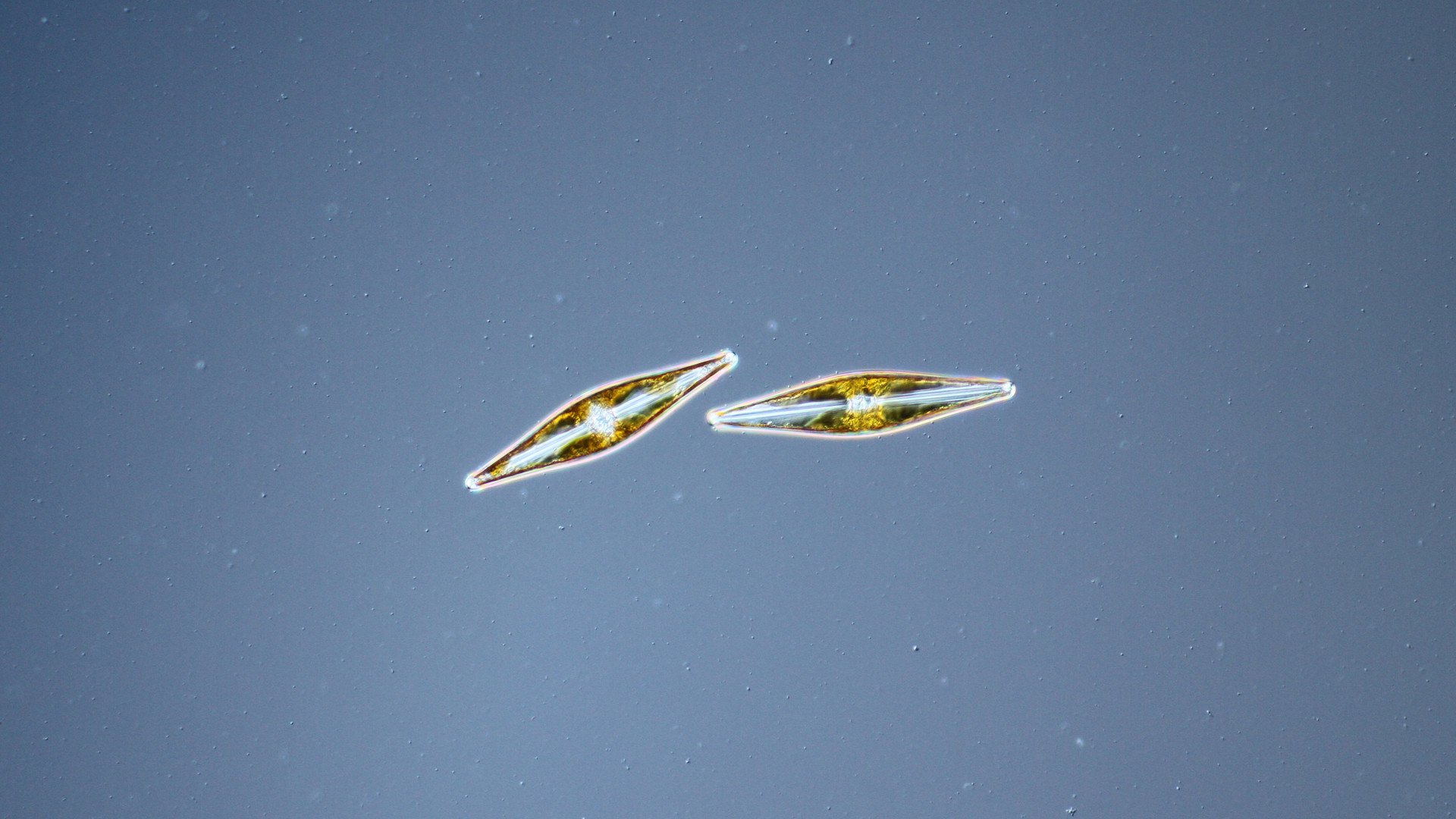Navicula sp. is a boat-shaped diatom. Its name is derived from the Latin word Navicula, meaning 'little ship' – a reference to its recognisable shape. The genus comprises more than 1,200 different species that all have a similar shape. To this day, new species of Navicula are still being discovered: as recently as 2015, two new species were found off the French and Flemish coast.
Navicula sp. is a boat-shaped diatom. Its name is derived from the Latin word Navicula, meaning 'little ship' – a reference to its recognisable shape. The genus comprises more than 1,200 different species that all have a similar shape. To this day, new species of Navicula are still being discovered: as recently as 2015, two new species were found off the French and Flemish coast.
Oxygen and food
Together with other diatoms, Navicula is one of the most common types of phytoplankton. Using photosynthesis, phytoplankton convert sunlight and CO2 into sugars they use for nourishment, emitting oxygen as a waste product. The enormous amount of phytoplankton in the oceans and lakes on our planet produces more than half of all oxygen in our atmosphere. Additionally, phytoplankton is an indispensable food source for zooplankton and many other organisms higher up on the food chain.
Glass tank
Diatoms are protected from predators by a sort of 'glass house' around their cell, which acts like a strong armour made of silicic acid. The armor's skeleton is made of two glass bowls that fit together like a box and its lid. Navicula is known for its unique method of locomotion. There is a slit all the way around its glass armour which has slimy strands protruding from it. These strands grasp the underlying surface and allow Navicula to pull itself ahead, functioning very similarly to the treads on a tank.

